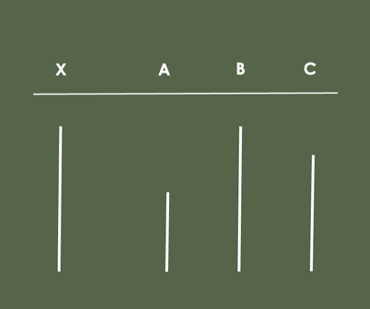Why sustainable behaviours matter
In a world increasingly struggling with the consequences of climate change, the urgency to adopt sustainable practices has never been more pressing. With novel technologies that help innovative new digital services and with regulations like the Corporate Sustainability Reporting Directive (CSRD) coming into effect, companies and organisations find themselves compelled to invest in sustainable practices like never before. But this shift isn’t just a corporate mandate; it’s a societal imperative that requires changes at both organisational and individual levels.
As the global population is surpassing 8 billion people and continues to rise, individual actions will play an increasingly important role, and businesses can help influence positive behavioural changes by understanding fundamental aspects of human behaviour. So how can psychological mechanisms and interventions help design sustainable behaviours?
Three strategies for designing sustainable behaviours
To be able to design new behaviours, we initially need to understand what hinders people from engaging in sustainable behaviours and what benefits we can help them realise. Depending on which behavioural barriers and benefits we want to target, there are different strategies to adopt.
1. Make people commit to sustainable behaviours
Sometimes we want to act sustainably, but still don’t do it. When attitudes don’t match behaviour, we can help people commit to sustainable behaviours. Research indicates that agreeing to a small initial request significantly increases the likelihood of agreeing to a subsequent larger request. For instance, consider committing to watching someone’s belongings at the beach. Studies on sunbathers revealed that those who made this small commitment were much more willing to pursue a thief, if necessary, compared to those who hadn’t committed. Individuals tend to stick to behaviours that they have committed to, especially when done publicly, as it alters the way they perceive themselves. This is because we want to be perceived as consistent and reliable.
In Canada, there was a campaign aimed to reduce engine idling time to decrease air pollution. In the first trial, signs simply instructed people to turn off their engines due to cost and inefficiency. In the second trial, they added personal messages highlighting the environmental impact of idling and distributed stickers that were attached to the windscreen of the cars as prompts for the drivers to turn their engines off. This small commitment led to a 73% increase in engine shutdowns. A public commitment can serve as a powerful motivator driving individuals to follow through on their promises and actively engage in sustainable practices.
2. Spread sustainable behaviours with social norms and social diffusion
Humans are social creatures. Perhaps not surprisingly, the fear of being left out of social groups is astonishingly large to human beings. That’s why social norms and social diffusion are so powerful when nudging individuals towards sustainable behaviours.
In one experiment by Solomon Asch, a pioneer in social psychology, visual discrimination was examined by asking participants in a group setting to select which line is equal to “X” in length. Initially, everyone correctly identified the line equally long as X. But when some of the actors in the group started giving incorrect answers, 75% of participants altered their responses to align with the group’s incorrect answers. However, when participants completed the tests individually, they answered 99% of the questions correctly.


